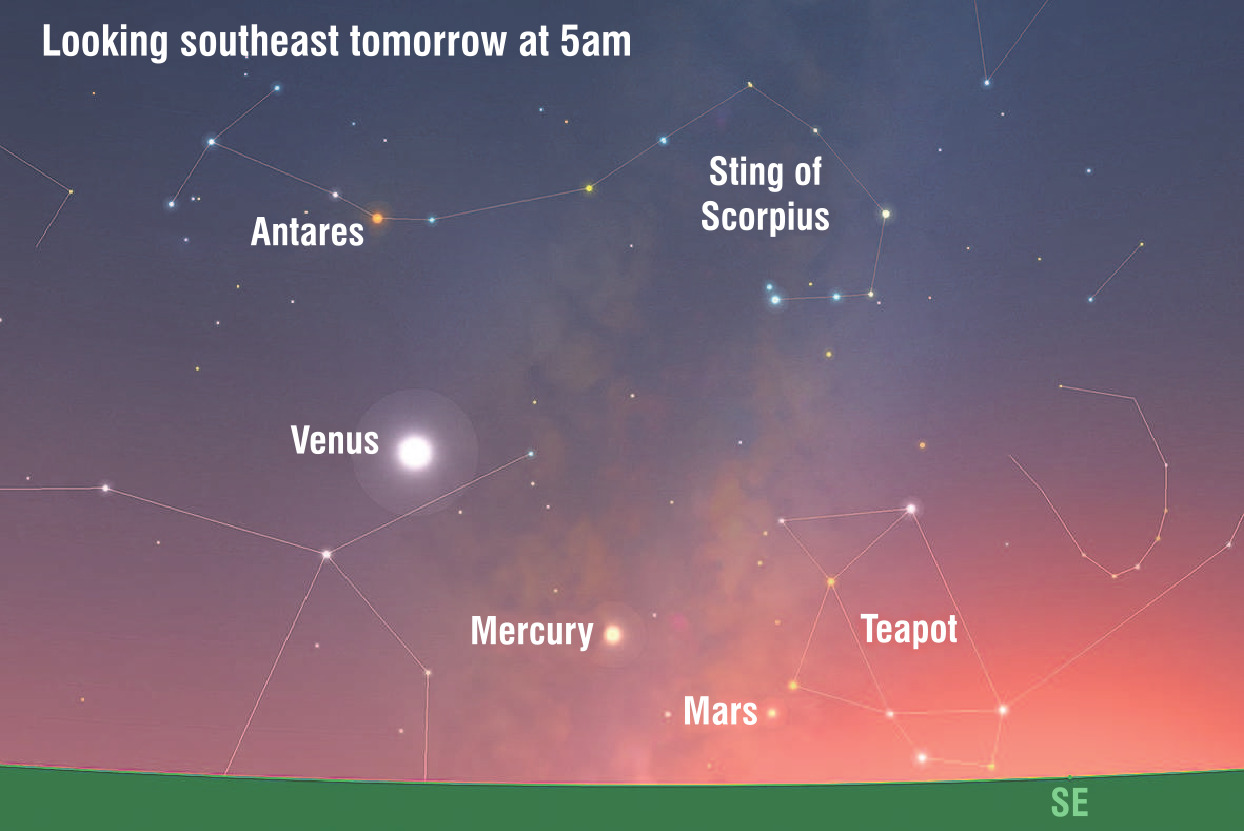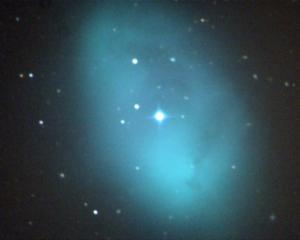
If the sky remains clear overnight, there’s a lovely gathering of planets in the morning sky, which is well worth getting up early to enjoy (even if you have a post-wedding hangover).
In my last column before Christmas, I mentioned that Venus is currently putting on a pretty good show. The second planet from the sun rises just after 3.30am and, by 5am, will be a blazingly bright object some 13 degrees above the horizon. Venus is moving through the constellation Ophiuchus, the serpent holder, and at dawn tomorrow, it will be just over 188 million km from Earth.

Mars is the final planet in this week’s pre-dawn gathering. It will be more challenging to locate than its celestial siblings because it is dimmer and considerably lower in the sky.
The red planet rises at 4.45am and has an altitude of just under three degrees at 5am. You will probably need a pair of binoculars to find it, especially as the sky gets brighter.
Like Mercury, Mars is in the constellation Sagittarius.











